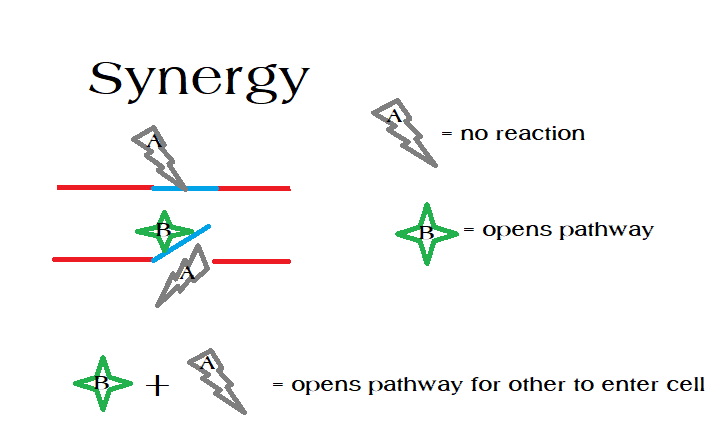I recently listened to a web lecture pertaining to the differences between natural and synthetic essential oils. The lecture was easy to follow and even easier to understand. It was focused solely on the differences and why it is actually in an essential oil users benefit to use something that is natural and not synthetic. This is important enough to me that I wanted to share what I learned.
So, in my own words, I am going to share what I learned. Here I go ...
Each essential oil contains constituents that make up the whole oil itself. These are important ingredients that equal efficacy. This result is done through synergistic methods. One constituent activating the pathway for another constituent to enter, thus producing an outcome.

If you only have constituent A, there is no reaction. If constituent B is present, this allows for A to enter and do the job. But, within an average essential oil, there are 100 constituents. Please note that this is the average amount, some contain less or more depending upon the oil. I am just using the average. With these 100 items working together, they produce a cascade effect that work together, performing what they are intended.
Often times, when something is made synthetically, the top constituents are replicated producing an item that is not the same, only similar. For example, there are five constituents that comprise 95% of the oil. There are then ninety-five constituents that compose the 5% remaining. The focus is on those five items that makeup 95% and that should be good enough, right?! Well it is not. This can cause adverse reactions, negative outcomes, or be completely ineffective. This is why:
Take a cell, pictured below. There is a cellular interaction network that needs even those trace 5% elements important. They all work together, interacting naturally within the cell producing the intended effect.

When only the top five constituents are the focus, even if they are made perfectly, you are faced with negative results such as a toxicity in vitro or on animals during testing. This isn't because those constituents are harmful within the essential oil themselves, but singled out is another story. So remember that when you are buying a product such as essential oils. Are they authentic?
d-Limonene may be in commercial cleaners and air fresheners, but I do not want to put those products on my skin, in my lungs or in my tea. I do however put Young Living Lemon essential oil in my diffuser, in my tea, in baking and into sprays to freshen the house up. Again, please know that this is just an example of one constituent within one essential oil, I am not telling you what you should or shouldn't do, this is for informational purposes only.
The summary of what I am saying is that all parts of an essential oil are important for it to function as it is intended. All constituents work together to produce whole product that is then used for a desired outcome. If one or more of those important elements are removed from the essential oil, it alters the whole composition rendering it a different product. The whole is how nature intended.
I am not a doctor and not here to diagnosis, treat, cure or prescribe. If you have a health concern, please contact your physician. This is for informational purposes only.


